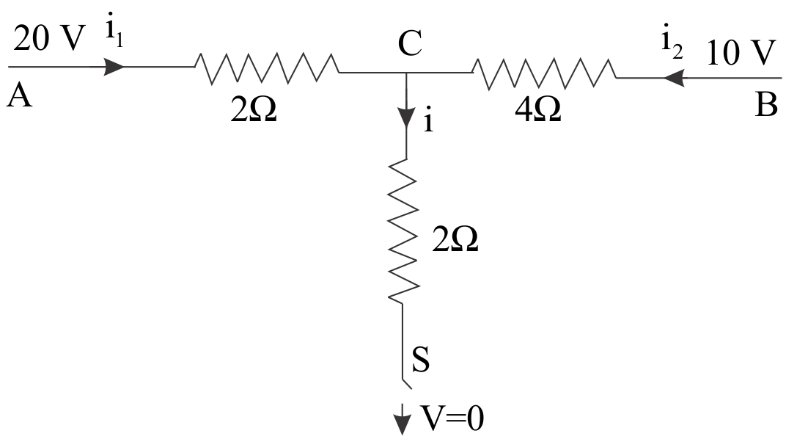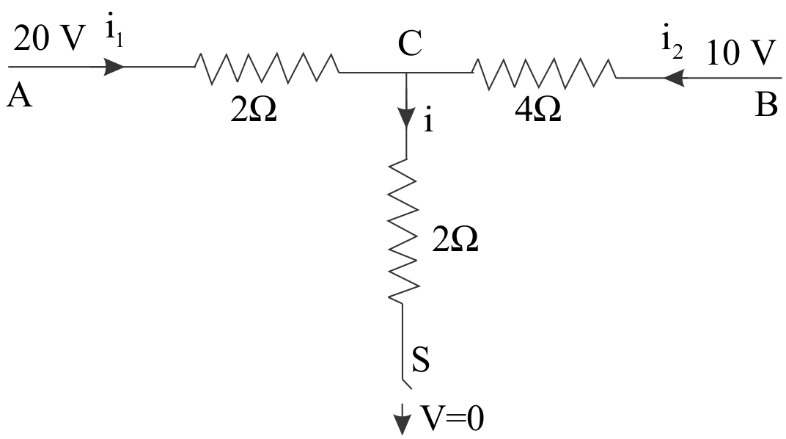Question
Question: When the switch \[S\] , in the circuit shows, is closed, then the value of current \[i\] will be: ...
When the switch S , in the circuit shows, is closed, then the value of current i will be:

(A) 3A
(B) 5A
(C) 4A
(D) 2A
Solution
Let the potential across terminal C be xV and apply the Kirchoff’s Current Law at point C i.e. the current incoming is equal to the current outgoing . And first find the value of x and this will ultimately help us in finding the value of i .
Complete step by step solution:

One end of the terminal C is grounded as we can clearly see and it has a potential of zero volts. As soon as the switch is closed the current will start running in that arm and we are required to find that value .
Let the potential at point C be xV .
At point C , we will apply Kirchoff’s First Law or we can say Kirchoff’s Current law which states that: the sum of currents entering the junction is equal to the sum of currents leaving the junction . It is based on the principle of conservation of charge.
This means that: i=i1+i2 ……..(i)
We know from Ohm’s Law that -
Writing the respective values of i,i1,i2 in eq(i) in terms of voltage and resistance across them .
i=i1+i2 2x−0=220−x+410−x 2x=(40−2x)+(10−x) 2x+2x+x=50 5x=50 x=10VNow we know that-
i=2x−0 i=210 i=5AHence, the correct option is B.
Note: We have to keep in mind that we have taken x as the potential across C and not potential drop ( which is the difference in potential between two points) while in the ohm’s law we always take potential difference across any two terminals . So that is why while writing the values of current we have written potential differences.
